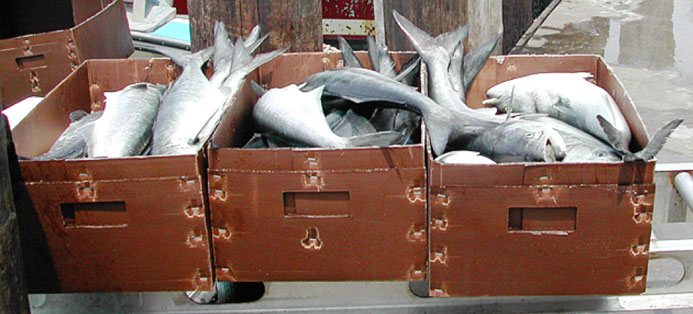Commercial Fisheries

New Jersey’s fishery and aquaculture resources contribute more than $1 billion annually to the state’s economy.
New Jersey’s fishery and aquaculture resources contribute more than $1 billion annually to the state’s economy. Commercial fishing has been a vibrant livelihood in New Jersey for over 300 years and seafood landed by Jersey fishermen is shipped to discerning seafood markets worldwide. New Jersey commercial fisheries often include over 100 different species of finfish and shellfish, the most economically important being sea scallops, surf clams, Atlantic mackerel, hard clams, blue crabs, ocean quahogs, fluke, monkfish, Atlantic herring, and American lobster. There are six major commercial fishing ports in New Jersey (Atlantic City, Barnegat Light, Belford, Cape May, Point Pleasant, and Port Norris), four of which rank in the top fifty ports in the country in terms of economic value. The economic benefits associated with the commercial fishing industry extend far beyond the industry itself and can provide direct economic support to other waterfront industries and surrounding communities. Despite the many benefits of the commercial fishing industry in New Jersey, increasing competition for the state’s coastal resources is threatening the industry’s viability and is creating both economic and political challenges that the industry must work to overcome.
Aquaculture is the farming of aquatic organisms such as fish, shellfish and plants. Shellfish production, primarily hard clams and oysters, account for the majority of aquaculture that takes place in New Jersey. Hard clam production is a thriving industry along the Atlantic seaboard of the United States. New Jersey ranks fifth among hard clam producing states behind Virginia, Florida, Connecticut and Massachusetts. The majority of oyster culture is conducted in the Delaware Bay; however, commercial oyster culture is also common along the Atlantic Coast. The oyster industry in Delaware Bay has been impacted by a oyster parasite Perkinsus marinum (dermo) and has resulted in reduced production and harvest rates. The Rutgers University Haskins Shellfish Research Laboratory (HSRL) conducts applied and basic research to support aquaculture of finfish and shellfish. They have conducted extensive research on oysters to help the industry remain viable in New Jersey. The Extension Program has partnered with HSRL to work with the Delaware Bay oyster industry and will focus on assisting with oyster research, commercial production, stock enhancement and harvest methods.
Contact: Lisa Calvo
Community Supported Fishery
Community supported fishery (CSF) programs have been growing in popularity in coastal areas across the country as a way to strengthen connections between fishermen and local communities and to promote sustainable fishing as a viable economic livelihood.
Undersea Imaging Workshop
This workshop was hosted by the NJSGC and NOAA Fisheries James J. Howard Marine Science Laboratory on Sandy Hook to evaluate the strengths and limits of photographic, videographic and direct observations as well as associated platforms for seafloor imaging as part of a benthic (seafloor) monitoring strategy.
The workshop brought engineers, government and academic scientists together to discuss the need for cost effective and comprehensive charaterization of offshore macrobenthic and demersal communities and habitats in the Northeast Large Marine Ecosystem.
Read the workshop report: Undersea Imaging Workshop.